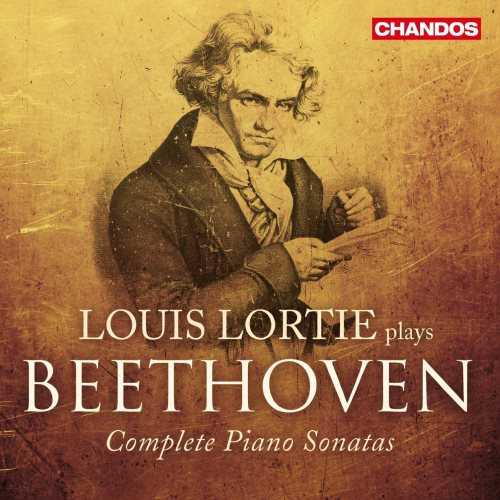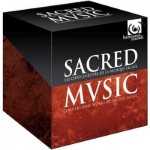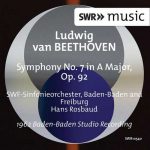
Composer: Ludwig van Beethoven
Performer: Louis Lortie
Audio CD
Number of Discs: 9 CD box set
Format: FLAC (tracks)
Label: Chandos
Size: 1.9 GB
Recovery: +3%
Scan: yes
Disc 1:
01. Piano Sonata No. 1 in F Minor, Op. 2, No. 1: I. Allegro
02. Piano Sonata No. 1 in F Minor, Op. 2, No. 1: II. Adagio
03. Piano Sonata No. 1 in F Minor, Op. 2, No. 1: III. Menuetto: Allegretto
04. Piano Sonata No. 1 in F Minor, Op. 2, No. 1: IV. Prestissimo
05. Piano Sonata No. 2 in A Major, Op. 2, No. 2: I. Allegro vivace
06. Piano Sonata No. 2 in A Major, Op. 2, No. 2: II. Largo appassionato
07. Piano Sonata No. 2 in A Major, Op. 2, No. 2: III. Scherzo: Allegretto – Trio
08. Piano Sonata No. 2 in A Major, Op. 2, No. 2: IV. Rondo: Grazioso
09. Piano Sonata No. 3 in C Major, Op. 2, No. 3: I. Allegro con brio
10. Piano Sonata No. 3 in C Major, Op. 2, No. 3: II. Adagio
11. Piano Sonata No. 3 in C Major, Op. 2, No. 3: III. Scherzo: Allegro – Trio
12. Piano Sonata No. 3 in C Major, Op. 2, No. 3: IV. Allegro assai
13. Sonata in D Major for Piano 4 Hands, Op. 6: I. Allegro molto
14. Sonata in D Major for Piano 4 Hands, Op. 6: II. Rondo: Moderato
Disc 2:
01. Piano Sonata No. 5 in C Minor, Op. 10, No. 1: I. Molto allegro e con brio
02. Piano Sonata No. 5 in C Minor, Op. 10, No. 1: II. Adagio molto
03. Piano Sonata No. 5 in C Minor, Op. 10, No. 1: III. Finale: Prestissimo
04. Piano Sonata No. 6 in F Major, Op. 10, No. 2: I. Allegro
05. Piano Sonata No. 6 in F Major, Op. 10, No. 2: II. Allegretto
06. Piano Sonata No. 6 in F Major, Op. 10, No. 2: III. Finale: Presto
07. Piano Sonata No. 7 in D Major, Op. 10, No. 3: I. Presto
08. Piano Sonata No. 7 in D Major, Op. 10, No. 3: II. Largo e mesto
09. Piano Sonata No. 7 in D Major, Op. 10, No. 3: III. Menuetto – Trio – Menuetto: Allegro
10. Piano Sonata No. 7 in D Major, Op. 10, No. 3: IV. Rondo: Allegro
11. Piano Sonata No. 8 in C Minor, Op. 13, “Pathetique”: I. Grave – Allegro di molto e con brio
12. Piano Sonata No. 8 in C Minor, Op. 13, “Pathetique”: II. Adagio cantabile
13. Piano Sonata No. 8 in C Minor, Op. 13, “Pathetique”: III. Rondo: Allegro
Disc 3:
01. Piano Sonata No. 9 in E Major, Op. 14, No. 1: I. Allegro
02. Piano Sonata No. 9 in E Major, Op. 14, No. 1: II. Allegretto
03. Piano Sonata No. 9 in E Major, Op. 14, No. 1: III. Rondo: Allegro comodo
04. Piano Sonata No. 10 in G Major, Op. 14, No. 2: I. Allegro
05. Piano Sonata No. 10 in G Major, Op. 14, No. 2: II. Andante
06. Piano Sonata No. 10 in G Major, Op. 14, No. 2: III. Scherzo: Allegro assai
07. Piano Sonata No. 11 in B-Flat Major, Op. 22: I. Allegro con brio
08. Piano Sonata No. 11 in B-Flat Major, Op. 22: II. Adagio con molto espressione
09. Piano Sonata No. 11 in B-Flat Major, Op. 22: III. Minuetto
10. Piano Sonata No. 11 in B-Flat Major, Op. 22: IV. Rondo: Allegretto
11. Piano Sonata No. 12 in A-Flat Major, Op. 26: I. Andante con variazioni
12. Piano Sonata No. 12 in A-Flat Major, Op. 26: II. Scherzo: Molto allegro
13. Piano Sonata No. 12 in A-Flat Major, Op. 26: III. Marcia funebre sulla morte d’un eroe
14. Piano Sonata No. 12 in A-Flat Major, Op. 26: IV. Allegro
Disc 4:
01. Piano Sonata No. 13 in E-Flat Major, Op. 27, No. 1: I. Andante
02. Piano Sonata No. 13 in E-Flat Major, Op. 27, No. 1: II. Allegro molto e vivace
03. Piano Sonata No. 13 in E-Flat Major, Op. 27, No. 1: III. Adagio con espressione
04. Piano Sonata No. 13 in E-Flat Major, Op. 27, No. 1: IV. Allegro vivace
05. Piano Sonata No. 14 in C-Sharp Minor, Op. 27, No. 2, “Moonlight”: I. Adagio sostenuto
06. Piano Sonata No. 14 in C-Sharp Minor, Op. 27, No. 2, “Moonlight”: II. Allegretto
07. Piano Sonata No. 14 in C-Sharp Minor, Op. 27, No. 2, “Moonlight”: III. Presto agitato
08. Piano Sonata No. 15 in D Major, Op. 28, “Pastoral”: I. Allegro
09. Piano Sonata No. 15 in D Major, Op. 28, “Pastoral”: II. Andante
10. Piano Sonata No. 15 in D Major, Op. 28, “Pastoral”: III. Scherzo: Allegro vivace
11. Piano Sonata No. 15 in D Major, Op. 28, “Pastoral”: IV. Rondo: Allegro ma non troppo
Disc 5:
01. Piano Sonata No. 16 in G Major, Op. 31, No. 1: I. Allegro vivace
02. Piano Sonata No. 16 in G Major, Op. 31, No. 1: II. Adagio grazioso
03. Piano Sonata No. 16 in G Major, Op. 31, No. 1: III. Rondo: Allegretto
04. Piano Sonata No. 17 in D Minor, Op. 31, No. 2, “Tempest”: I. Largo – Allegro
05. Piano Sonata No. 17 in D Minor, Op. 31, No. 2, “Tempest”: II. Adagio
06. Piano Sonata No. 17 in D Minor, Op. 31, No. 2, “Tempest”: III. Allegretto
07. Piano Sonata No. 18 in E-Flat Major, Op. 31, No. 3, “La Chasse”: I. Allegro
08. Piano Sonata No. 18 in E-Flat Major, Op. 31, No. 3, “La Chasse”: II. Scherzo: Allegretto vivace
09. Piano Sonata No. 18 in E-Flat Major, Op. 31, No. 3, “La Chasse”: III. Menuetto: Moderato e grazioso – Trio
10. Piano Sonata No. 18 in E-Flat Major, Op. 31, No. 3, “La Chasse”: IV. Presto con fuoco
Disc 6:
01. Piano Sonata No. 4 in E-Flat Major, Op. 7: I. Molto allegro
02. Piano Sonata No. 4 in E-Flat Major, Op. 7: II. Largo con gran espressione
03. Piano Sonata No. 4 in E-Flat Major, Op. 7: III. Allegro
04. Piano Sonata No. 4 in E-Flat Major, Op. 7: IV. Rondo: Poco allegretto
05. Piano Sonata No. 19 in G Minor, Op. 49, No. 1: I. Andante
06. Piano Sonata No. 19 in G Minor, Op. 49, No. 1: II. Rondo: Allegro
07. Piano Sonata No. 20 in G Major, Op. 49, No. 2: I. Allegro ma non troppo
08. Piano Sonata No. 20 in G Major, Op. 49, No. 2: II. Tempo di menuetto
09. Piano Sonata No. 21 in C Major, Op. 53, “Waldstein”: I. Allegro con brio
10. Piano Sonata No. 21 in C Major, Op. 53, “Waldstein”: II. Introduzione: Adagio molto
11. Piano Sonata No. 21 in C Major, Op. 53, “Waldstein”: III. Rondo: Allegretto moderato – Prestissimo
Disc 7:
01. Piano Sonata No. 22 in F Major, Op. 54: I. In tempo d’un minuetto
02. Piano Sonata No. 22 in F Major, Op. 54: II. Allegretto – Piu allegro
03. Piano Sonata No. 23 in F Minor, Op. 57, “Appassionata”: I. Allegro assai
04. Piano Sonata No. 23 in F Minor, Op. 57, “Appassionata”: II. Andante con moto
05. Piano Sonata No. 23 in F Minor, Op. 57, “Appassionata”: III. Allegro ma non troppo – Presto
06. Piano Sonata No. 24 in F-Sharp Major, Op. 78: I. Adagio cantabile – Allegro ma non troppo
07. Piano Sonata No. 24 in F-Sharp Major, Op. 78: II. Allegro vivace
08. Piano Sonata No. 25 in G Major, Op. 79: I. Presto alla tedesca
09. Piano Sonata No. 25 in G Major, Op. 79: II. Andante
10. Piano Sonata No. 25 in G Major, Op. 79: III. Vivace
11. Piano Sonata No. 26 in E-Flat Major, Op. 81a, “Les adieux”: I. Das Lebewohl: Adagio – Allegro
12. Piano Sonata No. 26 in E-Flat Major, Op. 81a, “Les adieux”: II. Abwesenheit: Andante espressivo
13. Piano Sonata No. 26 in E-Flat Major, Op. 81a, “Les adieux”: III. Das Wiedersehn: Vivacissimamente
Disc 8:
01. Piano Sonata No. 27 in E Minor, Op. 90: I. Mit lebhaftigkeit und durchaus mit Empfindung und Ausdruck
02. Piano Sonata No. 27 in E Minor, Op. 90: II. Nicht zu geschwind und sehr singbar vorgetragen
03. Piano Sonata No. 28 in A Major, Op. 101: I. Allegretto ma non troppo
04. Piano Sonata No. 28 in A Major, Op. 101: II. Vivace alla marcia
05. Piano Sonata No. 28 in A Major, Op. 101: III. Adagio ma non troppo con affeto – Presto
06. Piano Sonata No. 28 in A Major, Op. 101: IV. Allegro
07. Piano Sonata No. 29 in B-Flat Major, Op. 106, “Hammerklavier”: I. Allegro
08. Piano Sonata No. 29 in B-Flat Major, Op. 106, “Hammerklavier”: II. Scherzo: Assai vivace – Presto – Tempo I
09. Piano Sonata No. 29 in B-Flat Major, Op. 106, “Hammerklavier”: III. Adagio sostenuto, appassionato e con molto sentimento
10. Piano Sonata No. 29 in B-Flat Major, Op. 106, “Hammerklavier”: IV. Largo – Allegro risoluto
Disc 9:
01. Piano Sonata No. 30 in E Major, Op. 109: I. Vivace ma non troppo
02. Piano Sonata No. 30 in E Major, Op. 109: II. Prestissimo
03. Piano Sonata No. 30 in E Major, Op. 109: III. Gesangvoll, mit innigster Empfindung: Andante molto cantabile ed espressivo
04. Piano Sonata No. 30 in E Major, Op. 109: III. Variation 1: Molto espressivo
05. Piano Sonata No. 30 in E Major, Op. 109: III. Variation 2: Leggieramente
06. Piano Sonata No. 30 in E Major, Op. 109: III. Variation 3: Allegro vivace
07. Piano Sonata No. 30 in E Major, Op. 109: III. Variation 4: Etwas langsamer, als das Thema
08. Piano Sonata No. 30 in E Major, Op. 109: III. Variation 5: Allegro ma non troppo
09. Piano Sonata No. 30 in E Major, Op. 109: III. Variation 6: Tempo I del tema
10. Piano Sonata No. 31 in A-Flat Major, Op. 110: I. Moderato cantabile molto espressivo
11. Piano Sonata No. 31 in A-Flat Major, Op. 110: II. Allegro molto
12. Piano Sonata No. 31 in A-Flat Major, Op. 110: III. Adagio ma non troppo
13. Piano Sonata No. 31 in A-Flat Major, Op. 110: III. Adagio ma non troppo
14. Piano Sonata No. 31 in A-Flat Major, Op. 110: III. Fuga: Allegro ma non troppo
15. Piano Sonata No. 31 in A-Flat Major, Op. 110: III. L’istesso tempo di Arioso
16. Piano Sonata No. 31 in A-Flat Major, Op. 110: III. L’istesso tempo della Fuga poi a poi di nuovo vivente
17. Piano Sonata No. 32 in C Minor, Op. 111: I. Maestoso – Allegro con brio ed appassionato
18. Piano Sonata No. 32 in C Minor, Op. 111: II. Arietta: Adagio molto semplice e cantabile
19. Piano Sonata No. 32 in C Minor, Op. 111: II. [Variation 1]
20. Piano Sonata No. 32 in C Minor, Op. 111: II. [Variation 2] L’istesso tempo
21. Piano Sonata No. 32 in C Minor, Op. 111: II. [Variation 3] L’istesso tempo
22. Piano Sonata No. 32 in C Minor, Op. 111: II. [Variation 4]
23. Piano Sonata No. 32 in C Minor, Op. 111: II. [Variation 5]
louis_lortie_plays_beethoven02.rar – 240.4 MB
louis_lortie_plays_beethoven03.rar – 242.2 MB
louis_lortie_plays_beethoven04.rar – 196.8 MB
louis_lortie_plays_beethoven05.rar – 240.0 MB
louis_lortie_plays_beethoven06.rar – 214.3 MB
louis_lortie_plays_beethoven07.rar – 221.6 MB
louis_lortie_plays_beethoven08.rar – 217.2 MB
louis_lortie_plays_beethoven09.rar – 186.9 MB
Louis Lortie – charmingly elegant Beethoven sonata cycle
It is a tough task to approach the complete cycle of Beethoven piano sonatas even if you are a super virtuoso, established yourself for a long time in the Olympus of the music-makers. Louis Lortie finds it provoking and utterly worthwhile. So, he decided in his early 30s to record the whole treasure for his exclusive label Chandos. In his early 50s Lortie finished this demanding endeavour and offered finally a splendid coffret of 9 CD of the highest musical quality, comparable on equal footing to the famous recorded cycles by Alfred Brendel, Maurizio Pollini, Andras Schiff, Rudolf Buchbinder – to name but a few living pianists which signed benchmark versions in the catalogue.
Louis Lortie delivers an elegant vision of each sonata. His approach – without ignoring the drama – favours the classical poise, the minutely weighed utterances and the structural logic of music. On the other hand, Lortie compellingly proves that a great pianist can equally enjoy playing Beethoven, Chopin or Liszt without the need to specialize in narrow repertories. (I’ll come back with more details soon.)
Beethoven in living color
The Beethoven piano sonatas are made out of such sturdy stuff that they can withstand and even thrive under vastly differing approaches. No single artist, however insightful his interpretations, can say everything this music has to say. What is absolutely required, however, when playing these sonatas is a sense of color and “orchestration.” Beethoven’s symphonies and other orchestral works light the way to the composer’s marvelous conceptions of sounds, which carried over also into his piano works. What other composer has so thoroughly exploited the various registers of the pianoforte? Beethoven growls, rumbles, and thunders in the low registers, sings in the middle, and shimmers, twinkles, and quivers in the high. Any performance of the sonatas that slights on the innate variegation of these works will not reveal in due measure the complexity of the composer’s soul.
Louis Lortie well understands all this. His are highly colored performances, almost orchestral in their range of sounds. Lortie always remains within the bounds of refinement. His sense of sonority is unerring. Unlike some interpreters of these works, he always manages to “play through” Beethoven’s dense textures. He never produces ugly loud sounds or distorted rubato in the name of passion. Yet his boundaries of good taste are sufficiently wide for a high degree of expressivity, if you just listen to him on his own terms. This is by no means cold or detached playing. Although not as impetuous as, for example, a Gulda, or as “heart-on-sleeve” as, say, a Gilels or Richter, Lortie plumbs the depths of these works. Those who think that only a clangorous approach to Beethoven is authentic should bear in mind how many of the composer’s directions to performers include the words “molto espressivo” or “cantabile” (“sehr singbar”). Those who think that faster is always better should keep in view the many times Beethoven adds the cautionary “ma non troppo” to his “allegro” or “vivace.”
Not that Lortie plays particularly slowly; when required he can out-blitz the best of them. The Prestissimo of Op. 2 no. 1 he actually plays faster than the speed-demon Gulda (allowing for Lortie’s observance of the second repeat, which Gulda ignores), and just as cleanly; yet, unlike Gulda, still finds the innate lyricism. While Gulda seems not to have seen the words “ma non” in the directions of the last movement of the Appassionata, and accordingly is doomed to falter in his breakneck momentum, Lortie’s slower tempo keeps the passion burning with the intensity of a controlled fire. I would have liked a brisker first movement of the Waldstein–here Gulda’s blistering tempo works really well–but that is a matter of taste. While in the Rondo of the Waldstein many pianists level out the contrasts between the ultra-calm, contemplative theme, its triumphant restatement, and the boisterous “B” section, Lortie lets them all have their full way without trying to resolve their contradictions, thus revealing to the listener something of the composer’s complex inner world. Can anyone really bring a fresh current into the overplayed “Pathetique” sonata? In my judgment, Lortie has. His first movement becomes almost operatic in its intensity. The second theme of the exposition he plays more slowly and lyrically; one almost hears the exchange in Italian between the soprano and baritone. This serves to heighten the triumphant effect of the closing theme. Some may feel that he thereby sacrifices intensity, but there are scores of other renditions out there that do it their way.
Lortie’s general approach works remarkably well in the early sonatas. His Op. 2 no. 3 is a delight. In the hands of some pianists it sounds like a trifle, but Lortie opens our ears to depths of expression for which Beethoven was just beginning to find a personal musical voice. The slow movement in particular foreshadows the drama and mysticism that would so characterize the late sonatas. Lortie’s renditions of the middle-period sonatas, though also wonderful, are not as remarkable, but there’s not a dull moment in any of them. I particularly delight in the slow movement of Op. 31 no 1, where one can hear almost hear the orchestra or ensemble that may have been sounding inside Beethoven’s head. This movement isn’t quite the inconsequential fluff that many artists seem to think, judging by their perfunctory run-throughs.
The late sonatas are a marvel in Lortie’s hands. His Hammerklavier is not the most driving I have ever head, but neither is it raucous. By comparison, it seems that many pianists stress the “hammer” in “Hammerklavier” and pound this music senseless. Lortie on the other hand seems to find its many affinities with the final three sonatas in their lyricism and mysticism. Not that he plays it without power when required. Better than most, he holds this sprawling work together. His Op. 109 has to be one of the best on disc. A benchmark is the final variation of the last movement, the “trill” variation, whose mechanical difficulties are seldom overcome by even the best technicians to the extent that the music is allowed to break free to its exultant heights. Here Lortie comes closest of any recording I know to soaring beyond the confines of the keys.
If there’s any justice, Lortie’s cycle of Beethoven sonatas will eventually take its place with the greatest of them. I have listened to these over and over since purchasing them, comparing individual renditions of his with others. Each time I gain a new awe of both composer and pianist. I have a number of complete cycles on disc, as well as performances by various artists of individual sonatas. I couldn’t live alone with Schnabel–the sound is too poor and the same missed notes and idiosyncrasies over and over would fray the nerves. Arrau’s sometimes plodding mannerisms and sometimes muddy textures would produce for me the same effect. Gulda’s headlong approach works well sometimes, sometimes not. Barenboim is fine, but seldom revelatory. If forced to keep just one cycle, I would be hard pressed to choose between this set of Lortie and the outstanding cycle by David Allen Wehr on Connoisseur Society. The rest you could talk me out of. These two you would have to fight me for.




Yes !! Yes !!! Yes !! Wow. Thank you very, very much
A huge thankyou Whatever! a superb et of inspirational playing! I have quite a few sonata cycles and this is up there with the best off them!..superb playing. thank you for another great gift :)
Brilliant set, thanks Whatever and thanks for the huge current uploads.
Muchas gracias !!
Great share. Thanx.
Thank you Whatever!